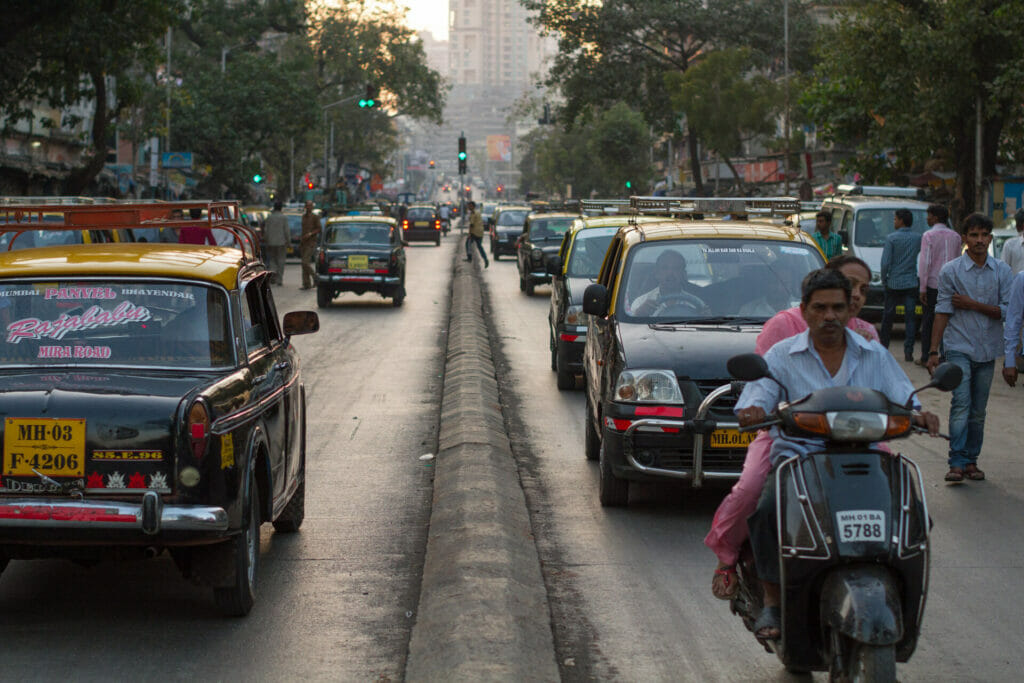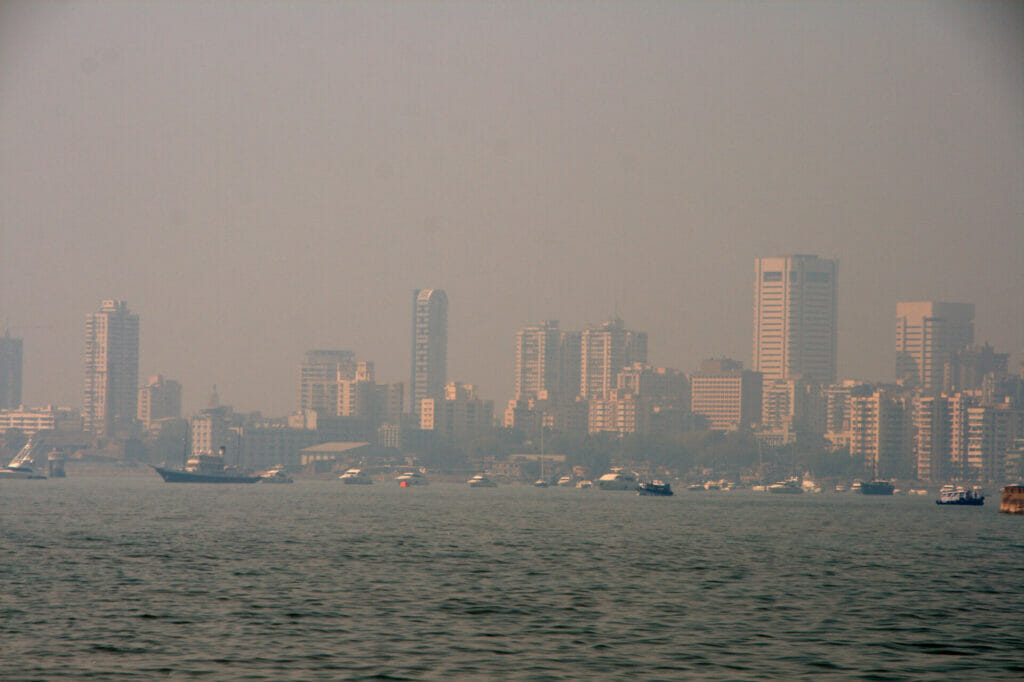For a large part of October, the air quality in Mumbai remained passable. Not very good, but not very bad either. The downslide began in the last few days of the month. The Air Quality Index (AQI) was at 79 —considered to be satisfactory; on October 22nd, it jumped to 121, moderate, the very next day. Mumbai’s AQI was 136 the day after that, and finally, on October 25th, the city’s air quality further deteriorated and turned ‘poor’ with an AQI of 213.
Maharashtra Pollution Control Board’s (MPCB) sub-regional officer Achyut Nandavate says, “We are sure that Mumbai is never going to be like Delhi.” On November 3rd, Delhi’s AQI touched 450, anything above 300 is considered very poor, the situation appears to have ‘improved’ ever since as the national capital recorded an AQI of 294 on November 14th.
On that same day, Mumbai had an AQI of 178 but it recorded an AQI of 193 just a few days earlier on November 9th. In the case of Mumbai, and Delhi as well, the arrival of winter worsens city’s AQI year-after-year. However, that’s not it.
What affects Mumbai’s AQI?
AQI is a single number derived out of common pollutants, especially Particulate Matter (PM2.5 and PM10), and other toxins like ozone (O3), nitrogen dioxide (NO2), sulphur dioxide (SO2) and carbon monoxide (CO).
A closer look at AQI of any city will show variations in the air quality where some areas will rank worse than others. For instance, within Mumbai, Chembur, Mazgaon and Malad had recently recorded poor AQI at 228, 242 and 276. Nandavate says within the city, an area’s traffic conditions, road conditions and other factors like construction work happening there, will determine the quality of air in that location.

“Mumbai has a very limited number of industries so the high AQI cannot be attributed to them. Most of the industries in Mumbai have been shifted to nearby Thane and Raigad district,” he says.
The director of System of Air Quality Weather Forecasting and Research (SAFAR), and a senior scientist, Dr Gufran Beig, feels differently. He says that while transport emissions are the highest and contribute the most to poor AQI, emissions from industries also play a role. “After industries, the third in the list is usage of bio-fuel,” he says.
Read more: Smoggy, but unfazed: Mumbai needs to take air pollution more seriously than it does
A 2021 analysis by SAFAR shows that transport is the primary source of PM 2.5 in Mumbai, as opposed to earlier years where industries and power plants contributed a large percentage. Another study by SAFAR says, “bio-fuel emissions are relatively high in Mumbai and Pune due to large slums where wood, cow dung, kerosene usage is rampant in urban slums for cooking activities with poor combustion technology.”
According to IQAir, a Swiss group that measures air quality levels based on the concentration of PM 2.5, in 2021, Mumbai had an annual PM 2.5 average of 46.4 microgram/cubic metre (µg/m3). This is nearly nine times higher than World Health Organization’s (WHO) air quality guideline of 5 µg/m3.
Meanwhile, another report that analysed data from 2010 to 2020 concluded that NO2 is a major pollutant in Mumbai often crossing the annual permissible limit of 40 µg/m3. The gas is mainly released in the air due to burning of fuel and emissions from cars, trucks, buses, and power plants are some of the sources of emissions.
According to MPCB officials, another factor that contributes to the rise of AQI in the city are bad roads. In 2019, BMC received a little over 15,000 complaints about roads, and in 2021 there were 7,500 complaints regarding the same. Furthermore, the civic body received the highest number of pollution-related complaints last year when compared to the earlier years.
Mumbai’s AQI and the winter connection
“There is a need for dispersion of pollutants but as temperatures fall and the winds decrease in winters, these pollutants tend to remain stagnated,” says Nandavate.
Expect Mumbai’s AQI to get worse as the winter progresses, Dr Beig says. “This year stagnation conditions were much more accompanied by worsening traffic conditions.”
Many factors have worsened the stagnation conditions this year. According to Dr Beig, one of them is the early arrival of “westerly disturbances” in the coming months. “When early westerly disturbances happen in the northern part of India, there is stagnation (of pollutants) in the western parts as well as the northern parts. Such disturbances are quite more than compared to last year.”
Western disturbances are storms that bring winter rainfall. Explaining how these will affect varying levels of AQI in different localities of the city, he says, “Once these westerly disturbances occur, it will equally pollute all the areas and local emissions in particular areas will not mean much.”

He makes it clear that with right policy measures in place, very high levels of AQI in the winters are preventable. “Weather always manipulates what is already present, it cannot create pollution or give out emissions. It is only when all the sources of emissions, mainly transport, industries and bio fuel, are controlled that things will get better,” he says.
BMC’s role in controlling Mumbai’s AQI
The MPCB officials say the larger burden of bringing down high levels of AQI in Mumbai is on Brihanmumbai Municipal Corporation (BMC). When asked if construction activities of Mumbai Metro plays a role in worsening of the air quality in the city, MPCB Mumbai’s regional officer, Sanjay Bhosale says, “Excavation work done for construction of infrastructure projects certainly contributes to AQI levels to a certain extent.”
A report by World Resources Institute (WRI) found the Mumbai Metro rail work to be the biggest source of dust pollution among the various ongoing infrastructure activities in Mumbai. The report said that construction activities contribute to almost 8% of the total emissions of particulate matter and that Mumbai Metro contributes to 3.2% of suspension dust.
The MPCB officials say BMC can make the situation much better by implementing Mumbai Climate Action Plan (MCAP). Under MCAP, the civic body has planned a range of short-term and long-term initiatives to mitigate environmental degradation. Some of these measures include reducing landfill waste, shifting to zero emission vehicles in the city, restoring and enhancing biodiversity, and creating more stations to monitor Mumbai’s AQI, as well as creating dust mitigation stations.
MCAP was launched in March this year when the Maharashtra Vikas Aghadi government was power, it was only in October that BMC invited a tender for measures in line with MCAP. The civic body had earmarked Rs 10 crore to install a dust mitigation and monitoring system at five locations across the city.
Manohar Charje, senior officer at BMC’s Air quality Research Laboratory in Santacruz, says, “BMC is working towards lowering pollution levels with initiatives like MCAP. At the same time we can’t stop infrastructure projects. There are many departments working on MCAP, setting up of 5 monitoring stations should be completed in the coming two to three months.”
Multiple BMC officials also made it a point to reiterate that Mumbai’s AQI is not as bad as Delhi.
‘Not doing enough’
Stalin Dayanand, founder of environmental NGO Vanashakti, believes it is possible to strike a balance between controlling pollution levels and strengthening Mumbai’s infrastructure. “The basic rule in construction is that it must be controlled using sprinklers but that is not done. On top of that, trees which help in pollution control are either cut entirely or the branches are chopped.”
He also pointed out that the condition of Kanjurmarg dumping ground is “one of the biggest mess in the world” with high amounts of methane emission. “It is a misconception that Mumbai will never be like Delhi. Mumbai reaching AQI above 200 itself is bad because we are a coastal city unlike Delhi which is landlocked,” Stalin says. “Mumbai’s AQI should not exceed above 150 in any case.”